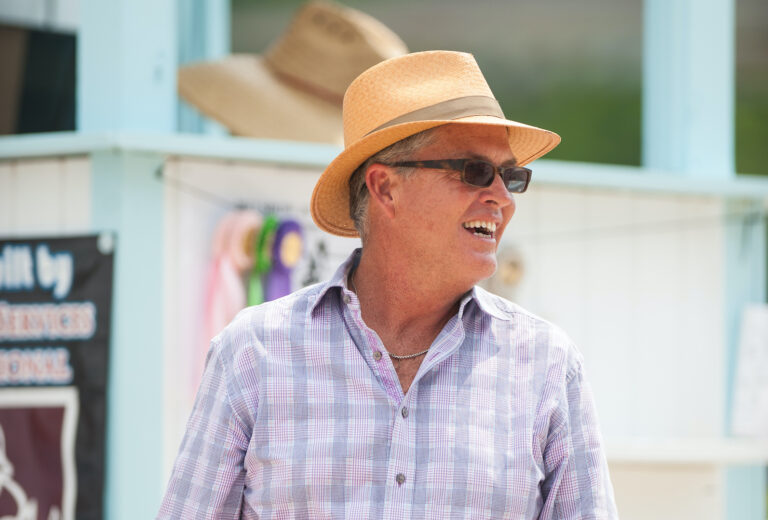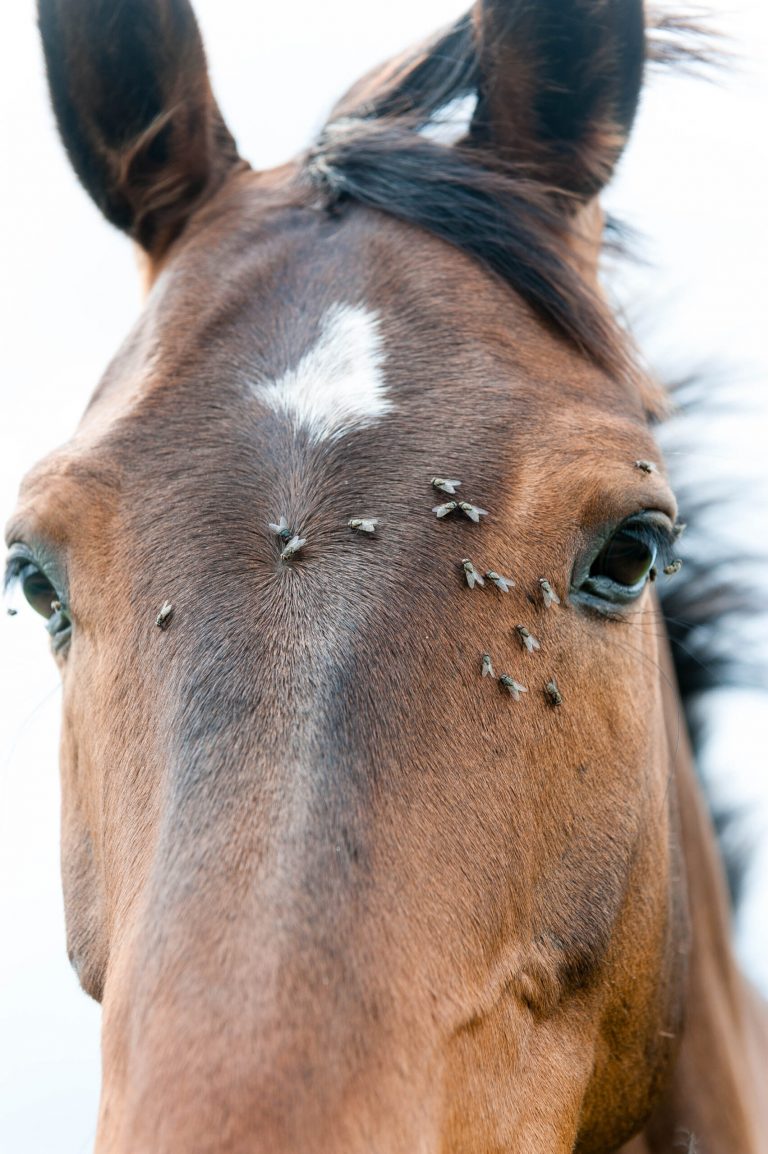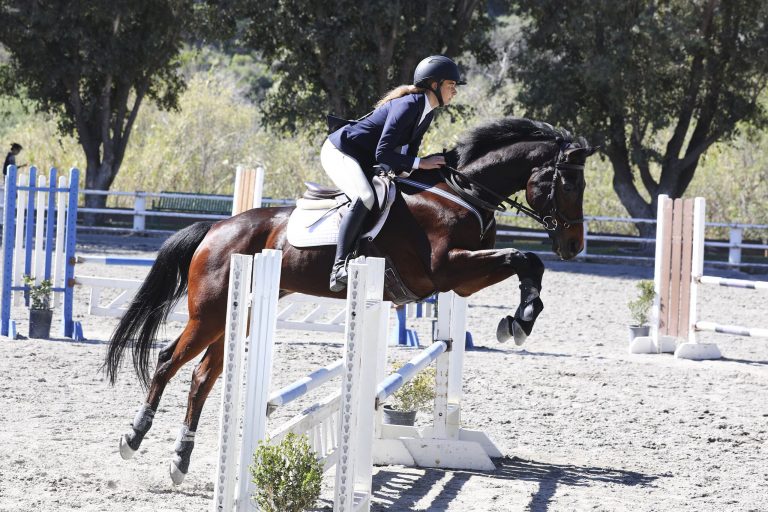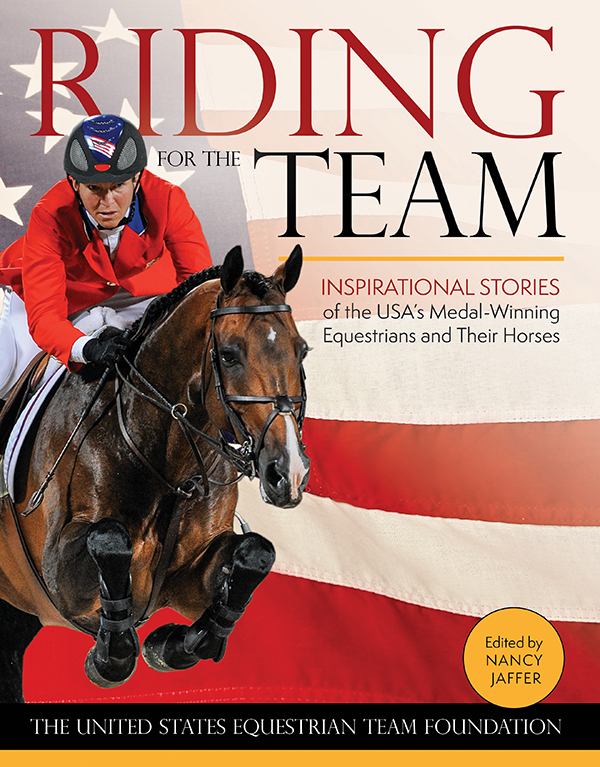
“Riding for the Team,” a new book from Trafalgar Square Books and the United States Equestrian Team Foundation, edited by Nancy Jaffer, chronicles the lives of those who dreamed about competing for the United States and “made it,” sharing inspirational stories from the international governing organization’s eight equestrian disciplines: show jumping, dressage, eventing, driving, vaulting, reining, endurance, and para-dressage. Athletes tell their stories and those of their horses during the years they honed their talent and dedicated their lives to representing their country in the Olympics, World Equestrian Games, World Championships, and Pan American Games.
In this chapter excerpted from Riding for the Team, Elizabeth (Beezie) Madden shares her story.
One of the world’s most successful show jumpers, Beezie Madden is among the most admired for her gracious demeanor, modesty and quiet dignity.
Her accomplishments are many, with Olympic team gold medals from Athens 2004 and Beijing/Hong Kong 2008, where she also earned individual bronze. She was on the silver medal U.S. teams at the 2016 Rio Olympics and at the 2006 World Equestrian Games in Aachen, Germany, winning individual silver there as well. She took individual bronze at the 2014 WEG in Normandy, France, where she also was part of the bronze medal team. Beezie twice has won the FEI World Cup finals and four times has been the U.S. Equestrian Federation’s Equestrian of the Year.
Beezie accounts for many firsts: She was the first woman to earn more than $1 million in show jumping, as well as the first American and the first woman to reach the top three on the world ranking list.
Her horses have included such stars as Northern Magic, Authentic, Judgement, Coral Reef Via Volo, Simon, Cortes C, and Breitling. She is based at John Madden Sales in Cazenovia, New York, with her husband, a former FEI vice president who has managed her career and works with sponsors and owners, as well as teaching and supervising the barn.
A believer in giving back to her sport, Beezie serves on the boards of the U.S. Equestrian Federation and the U.S. Equestrian Team Foundation.
—————————————-
My parents, Kathy and Joseph Patton, had hunters, so I basically grew up in the stable. I’ve loved horses since I can remember. I was five years old when my brother, Stewart, and I got our first Shetland ponies, Flicka and her dam, Fudge, along with their bridles—but no saddles.
I jumped and did everything with my pony bareback. I would ride so much that my parents would tell me when Flicka had had enough because otherwise, I would have ridden her all day.
They didn’t have pony classes at the shows in Wisconsin at that time. So at a couple of shows, we had to ask them to just lower the fences for us. I trained with Michael Henaghan and didn’t show a jumper until my last junior year, when we converted my junior hunter, Storytime, to a junior jumper. I only competed in the equitation finals during my last two junior years. My best finish was eighth in the hunt seat medal on a borrowed horse.
But I got more from equitation than a brown ribbon. Equitation teaches you to ride technical courses smoothly, which I think is important, because our sport is a game of concentration on the part of both horse and rider. The more effective you can be while still being smooth is critical because the horse has to concentrate on his job as well.
One of my best qualities is being able to focus and block out distractions. When people say there was a big crowd for a class I was in, I say, “I couldn’t tell you, I didn’t notice.”
When I feel like I’m under pressure and have the honor of being on the team and riding for my country, I approach it one round at a time. You can’t think of a multi-day show or a championship as a whole. I think of that competition and that course. I want to do it to the best of my ability in that round. You’re behind the eight ball if you worry about making a mistake; you’ve just got to show them how good you are.
After my junior career, I went to Southern Seminary College in Virginia for two years because Russ Walther, who headed the riding program, wanted me there. I was on the intercollegiate team and won the 1984 Cacchione Cup, the most prestigious award at the Intercollegiate Horse Shows Association’s national show.
Intercollegiate competition was a fun experience, hopping on strange horses and having to get it done (as I would do decades later in the Final Four at two World Championships). It also was a valuable experience because I learned to work with a team. When you do that, it’s not all about you and your success.
I graduated as valedictorian and was accepted to the University of Virginia, where I had been turned down when I first applied for college. But then trainer Katie Monahan offered me a job and I had to decide whether I would go to school or work with her. My parents said they would support me in college, or if I didn’t go, they would support me while I was training with Katie for a couple more years. So I went with her.
While riding with Katie, I discovered many things that were new to me. I learned so much from her about riding. From Pancho Lopez, who ran her barn, I absorbed a lot of valuable information about being a horseman.
My nature is not real aggressive, so Katie was my switch from equitation and hunters into jumpers. Every kid who goes through that needs to learn to be a little more aggressive and effective. It’s not all about smoothness. Sometimes you just have to get it done.
John Madden, who had worked for Katie, was transitioning out to start his own business as I was transitioning in. He moved to Wisconsin and one day he saw my mom at a show, telling her, “I wish I could get someone like Beezie to ride for me.” My mother replied, “Why don’t you ask her?” So he did. We worked well together for 10 years and in 1998, we got married.
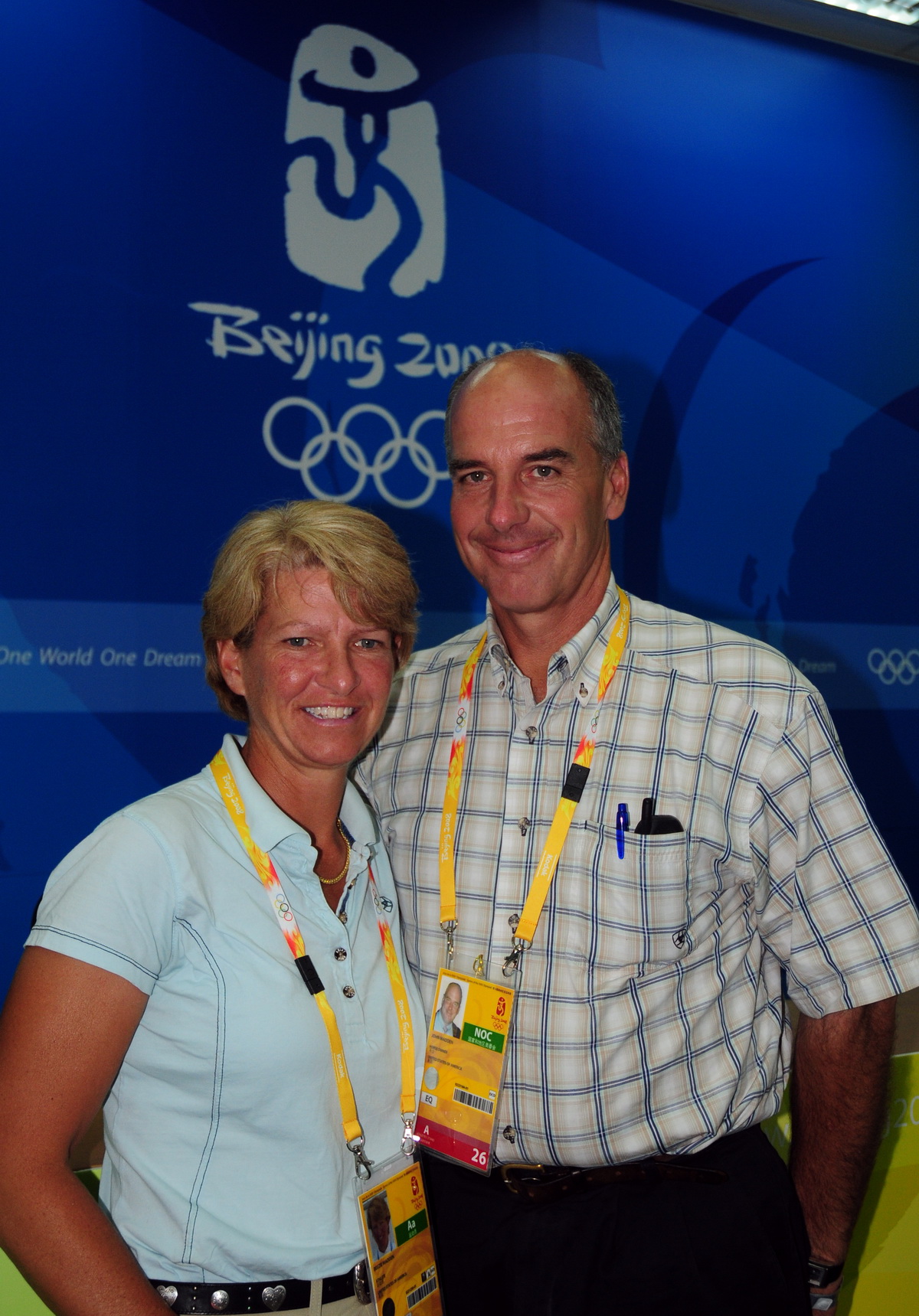
My first time on a team was in 1988 in Guadalajara, Mexico, where I rode Northern Magic. Rodney Jenkins was supposed to be on the team and serve as chef d’équipe, but he pulled out and I went in. John was asked to be chef. I was only supposed to be the fifth person, but after I won a class, John sought advice about who to put on the team from Bertalan de Némethy, the former U.S. coach, who was there as an official.
Bert told John I should be part of the Nations Cup squad. I went double-clear and we won. That was a milestone in my career. I never imagined being good enough to ride for the Team. I was a kid from the Midwest who did seven or eight shows a year until my last junior year. I wasn’t on anyone’s radar, including my own.
Northern Magic was my first good horse. We went to Europe with him the next year. It was quite an experience. In those days, not so many Americans wanted to go to Europe to compete. If you were going, you went on an official team or with a private stable’s tour—Hunterdon, which was George Morris’ stable, and Sandron, run by Joe Fargis and Conrad Homfeld, were the two operations that were doing that. We went on our own, and knew we had to win enough money to get back home!
It isn’t easy to get invitations to compete in Europe when you’re starting out, but we had help from Johan Heins, a Dutch horse dealer, the man through whom we buy our horses. On our 1989 tour, we hooked up with Conrad, Joe and Katie to form a squad for the Rome show. The fact that I was naïve helped me. I was able to go in there thinking, I can do this. I still have a copy of the Italian newspaper that came out the day after the Nations Cup; it had a photo of me, jumping the headlines.
This was kind of a storybook tour. Next, I got picked for the team at Aachen. When we walked the course the first day, John asked, “Do you think our horses can jump this?” I told him, “I hope so.”
In those days, the American Invitational was in Tampa Stadium, so my horses were used to being in a stadium like the one they had at Aachen, and since it was the same feeling, that helped us.
We won money in Rome and I was Leading Lady Rider at Wiesbaden. We were able to pay our way home and had proved it could be done. We got the fever, after having a good experience the first time.
The main goal for both John and me is to represent the United States—for me to be on teams and win medals for the country (and obviously, for ourselves, too). We’ve been lucky with our owners, because that’s been their main goal, too. They have been people who were really in it for the team and the country, and included my parents, Carol Hofmann Thompson and her sister, Judy Richter, the Jacobs family, Mary Alice Malone, Gwendolyn Meyer, Elizabeth Busch Burke and Abigail Wexner.

I tried to make the teams for the 1992, 1996, and 2000 Olympics, but they were all chosen objectively following a 1990 lawsuit over team selection. And when I had one bad round, I was out. It was discouraging. But I felt I was close enough and it kept me hungry.
My first FEI World Equestrian Games was in Jerez, Spain, in 2002. Michael Matz, who had the ride on Judgement, recommended me to the horse’s owner, Iron Spring Farm, after he retired, and that meant a lot. The first time I jumped Judgement, I was impressed and told John, “We don’t have any horses in our barn that feel like this.”
To do your first championship is amazing. The scope of the WEG is almost more overwhelming than the Olympic venue, because so much is going on at the same time. The first day I was there I watched eventing; it was a real team atmosphere.
I didn’t handle the pressure at the WEG as well as I would have wanted. It was a wake-up call, because I was trying to do everything too perfectly instead of going in there and riding—doing what I did best every day.
A friend of John’s, Ed Huber, had a farm in upstate Cazenovia, New York, and John started his business there. Ed would let him have stalls and when he sold a horse, John would pay him. Eventually, John found a farm that he liked in the area, but it was beyond his means. When it became affordable, we bought it, and now we own more than 300 acres where we also have based a horse-retirement business that has attracted a group of famous former showring stars.
For the trials for the 2004 Athens Olympics, Authentic pulled through on the last day when my other horse, DeSilvio, got hurt after he was leading the standings. I ended up in the top four.
We got Authentic when Elizabeth Busch Burke wanted to buy a horse, and she liked the Thoroughbred type, so he was a perfect choice for her—especially since he was winning six-year-old classes right and left. He didn’t jump in classic form, he had a bit of a “drapey” front end, but the feeling on him was better than it looked. You couldn’t get him too close to the fences, he was too careful. He had a cool personality; he was very cocky.
Being in Greece was exciting. None of us on the team—McLain Ward, Chris Kappler, Peter Wylde, and myself, as well as alternate Alison Robitaille—had ever been to the Olympics. I don’t think any of us were actually friends before this, but we had respect for each other. We were all excited to be there and we ended up doing a lot together; it was a great feeling.
That is, until Authentic colicked badly the day of the jog. They wouldn’t let us compete if we gave him any medication, and it was looking as if he’d need surgery and we’d be out of the Games. Then we let him roll, and that did the trick. Frank Chapot was chef d’équipe and he made me the anchor after I was able to go clear in the individual qualifier, despite everything we had just been through with the horse. We were all pretty equal going in, so I was honored and excited, and I thrive off the confidence of others. That kind of inspired me.
When you think about it, we were four rookies with two nine-year-old horses, Authentic and McLain’s Sapphire, on the team. We won silver behind the Germans and were on the podium with wreaths of olive branches on our heads. But as it happens, that wasn’t the last time we were on the podium.
A German horse tested positive for a banned substance at the Games. That eventually dropped them out of first place and moved us up. Eighteen months after the closing ceremonies in Athens, we were presented with the gold medal during a brief ceremony in Florida.
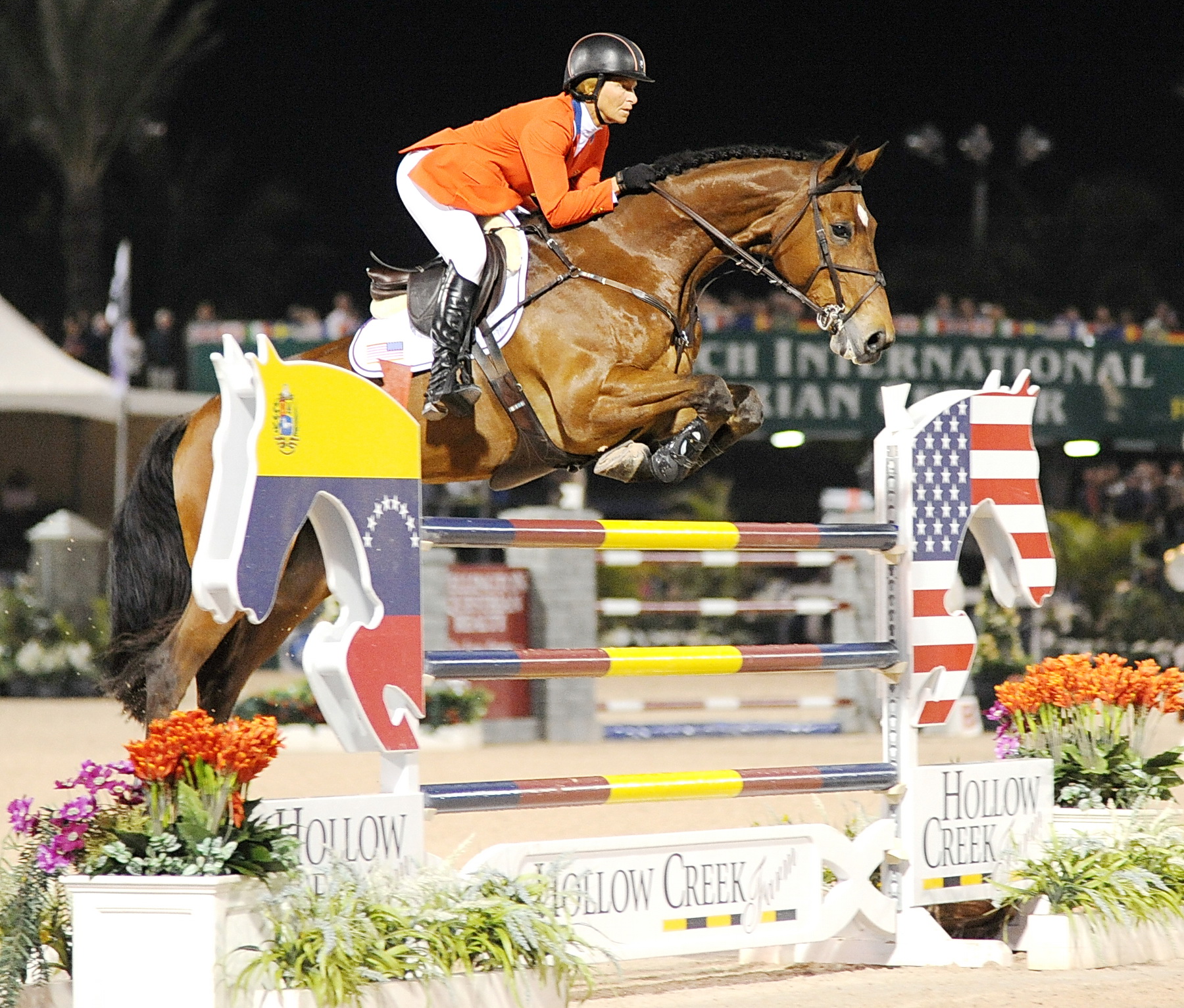
The 2006 WEG in Aachen was amazing. We got team silver and I won individual silver in the Final Four ride-off, where we all switched horses. After the team medal ceremonies, we did the victory lap at a walk. McLain turned to me and said, “I don’t think we’ll ever experience anything like this in our lives again.”
But he was wrong. We won team gold two years later in the next Olympics, in Hong Kong, where the venue was fantastic and the skyscrapers formed a dramatic backdrop for the arena. We beat Canada in a jump-off, so it was all North American on the highest levels of the podium.
The individual medal competition in Hong Kong was a great example of a team effort. McLain was in the jump-off and he found a shortcut by jumping over some bushes in the ring to save time against the clock. I was able to follow suit and win the individual bronze. Bronze was also my color at the 2014 WEG, where I was on the bronze medal team and took the individual bronze in what would be the last Final Four ride-off before the FEI came up with a more conventional way for deciding the individual WEG medals.
I love riding on teams, but know I can’t do it forever. So John and I planned what we should do after that. When I step back, I’ll continue riding and developing special young horses. We would also like to have students with goals of riding for the U.S. Equestrian Team. That would be exciting for us, too, and a new focus, while continuing our dedication to seeing the United States represented well internationally.
This excerpt from “Riding for the Team” is reprinted with permission from Trafalgar Square Books.






